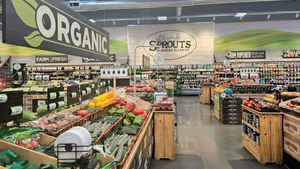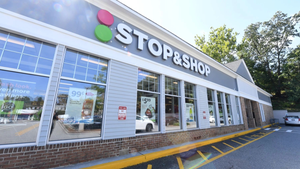Organic produce overcomes the cost conundrumOrganic produce overcomes the cost conundrum
Supermarket activity is on the upswing despite premium pricing
November 21, 2024

The higher cost of organic produce is proving to be less of a sales barrier.
Despite an average organic price of $2.82 per pound, versus $1.76 for conventional produce, organic volume sales were up 6.7% for the 52 weeks ending Oct. 6, 2024, reports Circana, a Chicago-based market research firm. Conventional fruit and vegetables sales grew 2.8% during the period.
Benefitting the organic sector was an average price decline of 2% during the interval, while conventional produce pricing was up 0.5%. “Because inflation in every part of American life has dominated our thinking, you would not expect a premium attribute like organic to hold share because of cheaper alternatives,” said Jonna Parker, Circana team lead, Fresh Foods Group. “But activity has been stable since the pandemic. Fresh organic produce has staying power.”
Helping to spur sales is greater product availability, she said. “Shoppers not only are finding organic produce in groceries, but also in club, mass market, supercenters, and value operations,” Parker said. “The ubiquity of organic produce in the majority of stores across a channel is driving activity.”
Shopper focus on wellness is helping to solidify interest in organic produce as well, she said. “Consumers will gravitate to organic if they are health-minded and the price gap between conventional and organic produce is not too great for them,” Parker said.
While organic produce prices have increased over the last several years, the rate of increase has been less than for most other food categories, she said. “It has only gone up 15% to 20% over the last five years versus the 30% increases in other parts of the store,” Parker said. “The inflation impact has been milder.”
Among user segments, the “engaged” organic shopper holds the most promise for generating greater category activity, she said. “The light and occasional buyer is important, but it is the rest of the spectrum that matters more,” Parker said. “To grow sales, you must understand the heavy buyers and play to them. Retailers need to focus on the top-end and most frequent and loyal shopper.”
That includes using digital marketing to educate consumers on offerings, Parker said, noting that 70% of all purchasing within the next two years will result from online influences. “It is about building a story and having differentiation,” she said.
Stores also should vary their organic produce options, including package sizes, in accordance with the interests of shoppers in distinct locations, Parker said.
About the Author
You May Also Like


.webp?width=300&auto=webp&quality=80&disable=upscale)



